Methods for Efficient Visual Data Analytics in e-Science Applications

The multidisciplinary collaboration project “Methods for Efficient Visual Data Analytics in e-Science Applications” is driven by current needs and trends in visualization. Effective analysis of increasingly large and complex data from simulations and experiments is an essential step in the scientific process. Thereby Visual Data Analytics complements and integrates with other analysis approaches, such as statistical and machine learning methods, by putting the human in the loop. The focus is the coming funding period is on the increasing complexity of demands in all aspects:
- Increasing data complexity in terms of size and structure requires more efficient, scalable algorithms using available resources, such as memory and computing time in a responsible way. Targeted SeRC applications include computational materials design, molecular dynamics simulations, fluid dynamics, or climate modeling. Towards this goal, data reduction strategies, e.g., applied during the simulation in an in-situ setting, optimally that support multi-scale posthoc visual data analysis play an important role.
- Increasing application and task complexity require a strong integration of visualization with automatic and statistical methods. Interpretability, reliability, and robustness in all steps are fundamental demands. Solid evaluations and visualization designs must ensure that tools and interfaces map the needs of the applications and are not overwhelming. More specifically we will develop visualization concepts and environments for ensemble visualization, which play an increasing role in SeRC e.g., in climate or material research.
- Increasing need for good science communication explaining the role of sciences in approaching the fundamental challenges of our time. Interactive visualization is one of the premier techniques to effectively communicate scientific findings to the general public. We will exploit and extend software packages that SeRC already contributed to in Dome environments and public exhibition spaces.
- Solid tool and software developments ensure the sustainable impact of all these methods. Software development plays an important role in visualization research and applications and is the backbone of the MCP including the following packages. Inviwo is an open-source rapid prototyping software, developed in SeRC, with a generic character, to support visualization research in applications. OpenSpace is an open-source contextualization engine, whose development is directed from Norrköping with many international partners. It is designed for interactive contextualized presentations of datasets from observations, space mission planning, and operations. VIAMD is a lightweight software application for Visual Interactive Analysis of Molecular Dynamics targeting specific demands in MD applications that are not well supported in typical MD visualization tools.
Members
People involved can be found here.
Projects
- Visual analytics algorithms for reliable feature comparison and tracking in material design applications.
- Stable multi-parameter-based feature tracking in climate/meteorology applications
- In-situ feature-based exploration of large-scale data for flow and climate simulations
- Pattern and structure identification in complex data and networks in flow and brain research applications
- OpenSpace: A tool for research and communication
- Software applications for Theoretical Chemistry analysis




